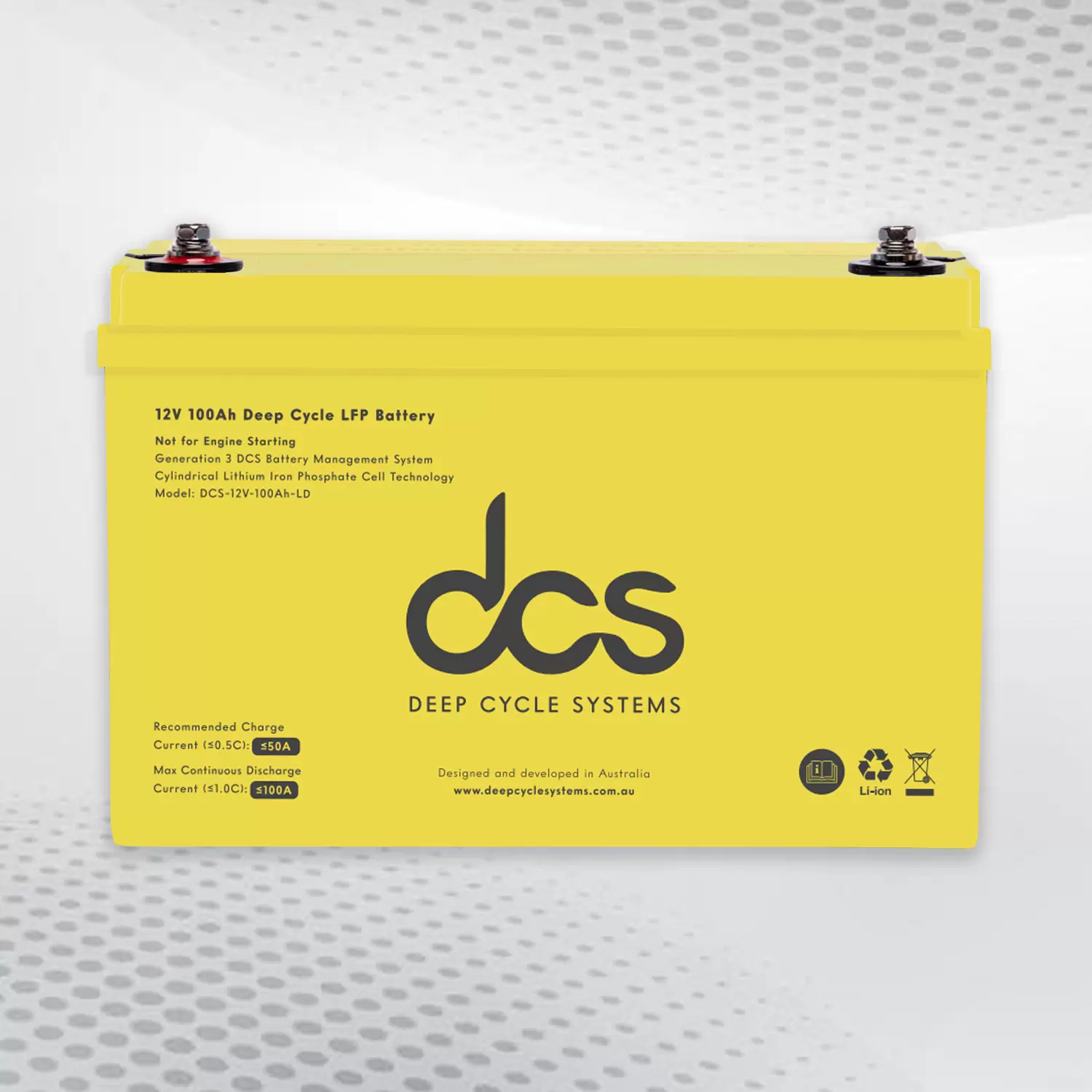A 100Ah lithium battery can deliver 1 amp for 100 hours or ten amps for 10 hours, providing reliable power for extended periods. Known for their efficiency, lightweight build, and long lifespan, these batteries are increasingly popular across various sectors. They are ideal for applications needing consistent energy over time. Their efficiency and durability make them a preferred choice in multiple settings, ensuring steady performance. With technological advancements, these batteries continue to improve, offering better energy solutions for diverse needs. Understanding these characteristics is essential for choosing the correct battery to meet your requirements.
Varieties of 100Ah Lithium Batteries
There are two main types of 100Ah lithium batteries: lithium iron phosphate (LiFePO4) and lithium-ion (Li-ion). Lithium iron phosphate batteries are valued for their stability and safety, being less prone to overheating and offering a longer cycle life. However, they are generally heavier and less energy-dense.
Conversely, lithium-ion batteries provide higher energy density and are lighter, though they require additional safety measures due to their susceptibility to thermal runaway. The choice between these types depends on specific application needs and safety considerations.
Uses of 100Ah Lithium Batteries
100Ah lithium batteries are used in renewable energy systems to store solar power for continuous use. Due to their lightweight and compact nature, they are favoured in marine applications and recreational vehicles. Additionally, they serve as reliable backup power sources in emergency systems and off-grid settings where uninterrupted energy is essential.
Considerations for Selecting 100ah slimline lithium battery
When choosing a 100Ah lithium battery, focus on your energy requirements and ensure compatibility with your current system. Check the voltage to match your setup, and consider the battery’s cycle life and durability, which can be influenced by depth of discharge and operational conditions. Batteries with higher cycle life and solid construction are ideal for long-term use. Assess whether the battery includes a management system for safety and ease of maintenance. Compare the weight and size to ensure it fits your installation space and does not compromise mobility or efficiency.
Deciphering Battery Specifications
Key specifications include voltage, capacity (Ah), cycle life, and discharge rate. The voltage must be compatible with your existing system. Capacity is measured in ampere-hours (Ah) and determines the battery’s total energy storage. Cycle life represents the number of complete charge and discharge cycles the battery can endure before its capacity significantly degrades.
The discharge rate, often listed as a C-rate, indicates how quickly energy can be drawn from the battery without causing damage. For instance, a 1C discharge rate means the battery can be safely discharged in one hour. Additionally, look at other details like temperature ranges, impacting performance and longevity. Understanding these specifications helps ensure the battery will meet your energy needs efficiently and safely.
Cost versus Quality
Investing in a higher-quality 100Ah lithium battery often results in long-term savings due to better efficiency and longevity. While cheaper options might seem appealing, they frequently compromise on essential features such as battery management systems, which enhance safety and performance. More expensive models typically offer robust warranties and reliable customer support, adding value over time.
When evaluating cost versus quality, consider the total cost of ownership, including potential replacements, maintenance, and energy efficiency. Higher-quality batteries usually have a longer cycle life and consistent performance, making them a more economical choice in the long run. Prioritise features that align with your needs, ensuring you gain the most from your investment.
Environmental Factors for 100Ah Slimline Lithium Battery
When selecting a battery, it’s essential to consider eco-friendly choices. Some manufacturers use sustainable practices and recyclable materials, contributing to reduced environmental impact. Ensuring proper disposal and recycling of the 100ah slimline lithium battery
is crucial. Many manufacturers offer recycling programmes or provide guidelines on how to dispose of old batteries responsibly. Additionally, check for compliance with environmental standards and certifications, which indicate a commitment to reducing ecological footprints. Opting for batteries with lower environmental impact helps support a more sustainable future.
Installation and Upkeep
Proper installation is crucial to ensuring optimal performance of your 100Ah lithium battery. Begin by following the manufacturer’s instructions and paying close attention to wiring and connection details to avoid mishaps. Ensure the battery is securely mounted in a well-ventilated area to prevent overheating. Regularly inspect the battery for wear or damage, particularly at connection points and terminals. Use a soft brush and appropriate cleaning solution to clean the terminals periodically to prevent corrosion. If available, monitor the battery’s health through its management system and keep track of charge cycles to anticipate any potential issues. Periodic checks and routine maintenance will significantly enhance the longevity and efficiency of your battery, helping you avoid unexpected failures.
Safety Guidelines
Follow guidelines to prevent overcharging or deep discharging, which can damage the battery. Always use the recommended charger and adhere to handling protocols to prevent accidents. Avoid using damaged or faulty chargers, as they pose significant risks. Be cautious when handling batteries, ensuring you do not puncture or drop them. Use appropriate protective gear when necessary. Keep batteries away from flammable materials and ensure proper ventilation to mitigate overheating risks. Regularly check for leaks or unusual behaviour and address issues promptly to maintain safety. If any malfunction occurs, discontinue use immediately and seek professional advice.
Troubleshooting Frequent Issues
Reduced capacity and failure to charge are common issues with lithium batteries. Begin troubleshooting by checking for loose or corroded connections, which can impede charging. Ensure your charger is compatible and functioning correctly. Inspect the battery for any physical damage, such as swelling or cracks, which can indicate internal problems. If the battery shows overheating, it may be due to a malfunctioning management system or improper ventilation. Use a multimeter to check the voltage and ensure it aligns with the specifications. If problems persist despite these checks, it is advisable to consult a professional for further diagnosis and repair.
Future Developments in Lithium Battery Technology
The landscape of lithium battery technology is continually evolving. One key area of advancement is the development of solid-state batteries, which promise excellent stability and efficiency. These batteries replace the liquid electrolyte with a solid, reducing the risk of leakage and thermal runaway. Additionally, researchers are exploring silicon anodes to increase energy density, allowing batteries to store more power in a smaller space. Faster charging technologies are also being developed to reduce the time required to charge a battery fully. Moreover, innovations in battery management systems are improving safety and longevity, making these batteries more reliable. Monitor industry trends to see how these technological advancements could benefit various applications.
Conclusion
Selecting a 100Ah lithium battery requires a clear understanding of your energy demands and the specific features offered by different types of batteries. Look for batteries that match your voltage requirements and consider their cycle life and discharge rates. Compare reputable brands and models, taking note of their reliability, user reviews, and warranty terms—Prioritise batteries with a robust management system for enhanced safety and performance. Consider eco-friendly options and ensure proper disposal and recycling practices. By adhering to best practices for installation, maintenance, and safety, you can maximise the efficiency and lifespan of your battery.
FAQS
What is the expected lifespan of a 100Ah lithium battery?
Typically, the lifespan of a 100Ah lithium battery ranges from 5 to 10 years, depending on how it is used and maintained. Proper care, such as avoiding overcharging and deep discharging, can help extend its longevity.
Is a 100Ah lithium battery suitable for solar power storage?
Yes, 100Ah lithium batteries are well-suited for solar power storage. Their efficiency and long cycle life make them ideal for storing energy generated from solar panels, ensuring a consistent power supply even during periods of low sunlight.
What should I look for in a battery management system (BMS)?
A good BMS should provide safety features such as overcharge and discharge protection, temperature monitoring, and short-circuit prevention. These features help maintain the battery’s health and prolong its lifespan.
Can I replace a lead-acid battery with a 100Ah lithium battery?
Yes, in many cases, a 100Ah lithium battery can replace a lead-acid battery. However, you should check compatibility with your existing system, particularly regarding voltage and charging requirements.
How do I ensure proper installation and maintenance?
Follow the manufacturer’s guidelines for installation and use, providing the battery is securely mounted and well-ventilated. Inspect for signs of wear or damage, and clean the terminals periodically to prevent corrosion.
How do I dispose of a lithium battery responsibly?
Check with your battery manufacturer or local recycling centres for proper disposal methods. Many manufacturers offer recycling programmes to ensure responsible handling of old batteries.




